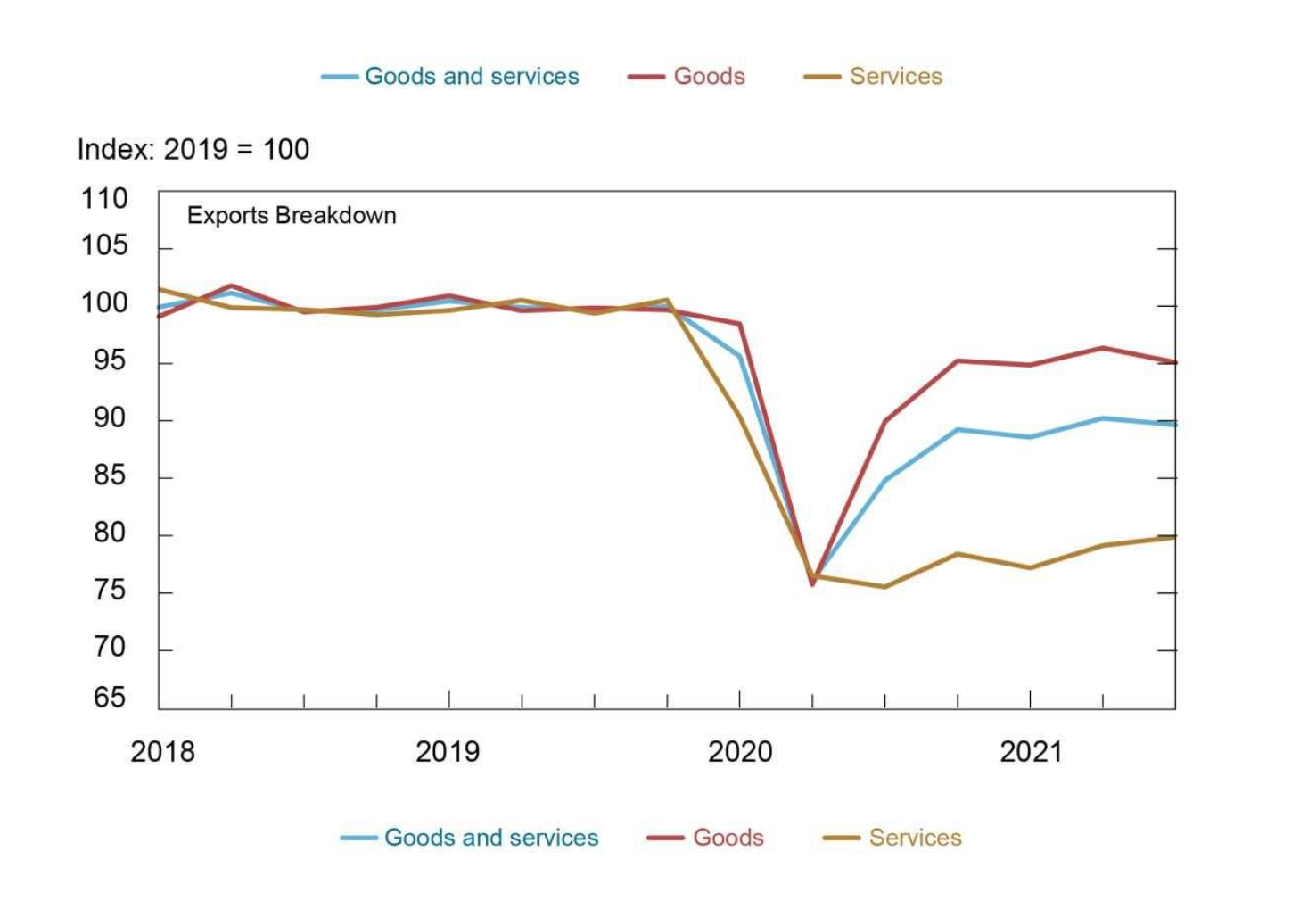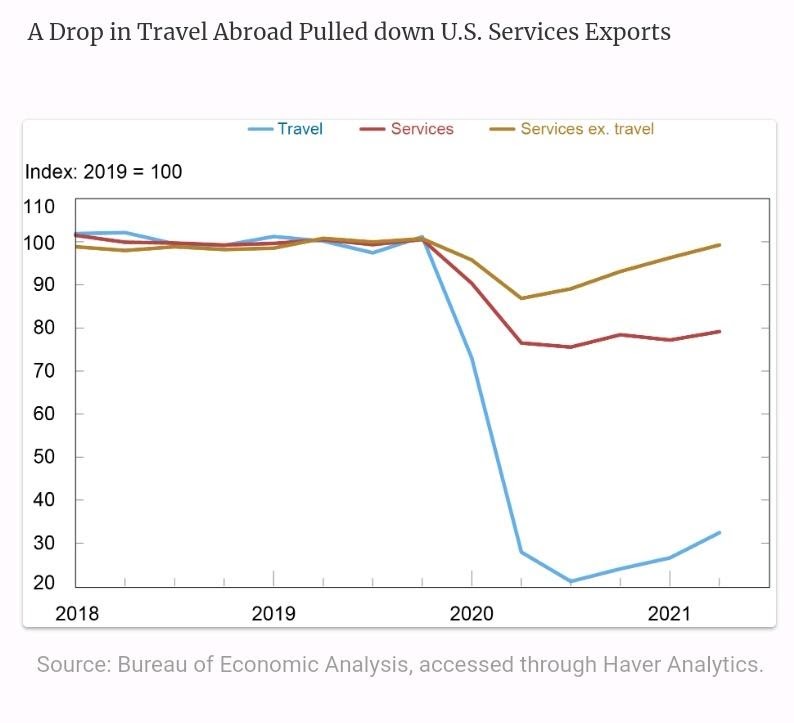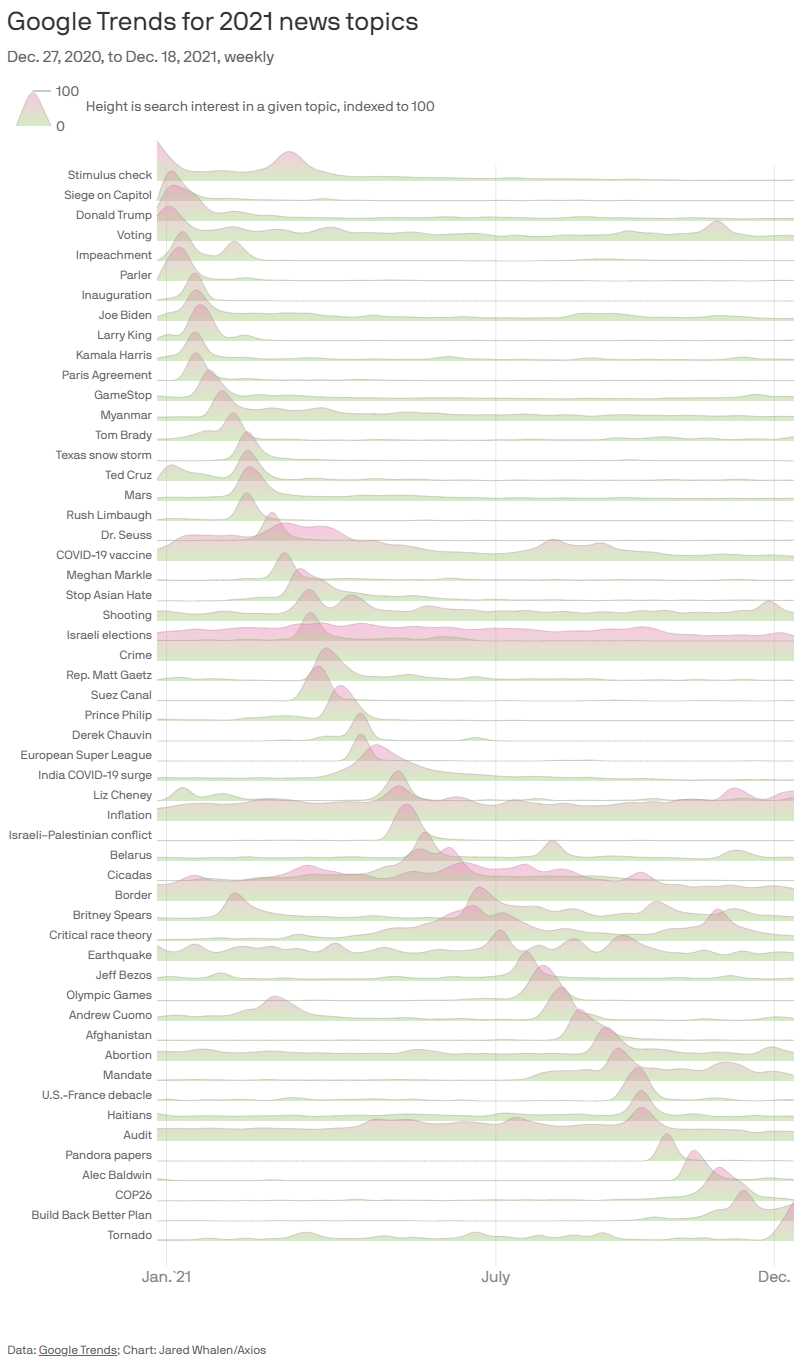Dear Capitolisters,
Year-end navel-gazing typically occurs in December when writers are looking for cheap vacation copy, but last week’s public health rant pushed Capitolism’s 2021 look-back to this week. (I’m sure you’ll survive.) I was actually planning to shelve this review entirely but realized—with the help of a few folks on Twitter—that some of my columns could be new to you (either as a new Dispatch member or simply not (yet) a Diehard Capitolism Fanboi) and remain relevant. So today we’ll look back at the columns you liked, the ones I liked, some of my biggest hits and misses from 2021, and some of the stuff we’ll probably still be talking about in 2022, whether we like it or not.
Your Faves
To determine reader interest in a particular column, we can look at the number of “likes” and comments in the Capitolism archive for 2021. This approach, of course, isn’t totally scientific—comments, for example, could be driven by inter-commenter squabbles, and of course a lot of people could just read (and hopefully) share the newsletter’s email versions without ever clicking anything. Another confounding issue is that a few columns have been unlocked for or distributed to non-members(upping their “click-potential”), while most haven’t. Finally, there’s the simple issue of time: A column from last February has a greater chance of being seen than one from a few weeks ago simply because the former’s been around longer (though this one seems minor, as activity tends to abate after a few days).
Nevertheless, these are the metrics we have (publicly, at least), and they do tend to track the social media buzz when a column first hits and The Dispatch’s super-secret analytics, a hardcopy of which I was allowed to view for only 7 minutes in the secure vault at HQ.
With those disclaimers out of the way, here’s what the data show—in chart form, of course—for Capitolism 2021 reader interactions as of this past weekend, with columns listed in chronological order from left to right:

As you can see, the big winner last year was—hilariously—my somewhat-in-jest screed against daylight saving time (206 likes; 181 comments). Since my nachos column won 2020 (140/221), this is now the second year in a row that comedy has defeated wonkery in terms of reader engagement. I’m not sure what that says, exactly, about my writing and your reading, but… here we are. The rest of the top 10, with combined likes/comments in [brackets], are as follows:
America’s Math Problem (on innumeracy and public policy) [343]
Let's Talk About a $15 Minimum Wage (self-explanatory) [319]
2021 (Unfortunately) Comes Full Circle—And Radicalizes Me in the Process (on free markets versus heavy regulation during the pandemic) [280]
What if the Labor Shortage Isn’t Transitory? (on the likely drivers of the Fall 2021 labor shortage) [242]
American Sclerosis (on how policies benefiting discrete interest groups gummed up our supply chains, infrastructure, and ability to build stuff) [236]
It’s Time to Start Being Optimistic (on the increasingly rosy economic and public health outlook in the dark days of early February 2021) [222]
Not Ready for Prime Time (on the realities of American prime-age labor force participation) [221]
While You Were Seussing (on the GOP’s culture warring while the Democrats passed the massive American Rescue Plan) [220]
Populist Indulgence Thwarts Serious Governing (a post-January 6 take on populist politicians’ serious reality problem) [196]
For the most part, this ranking makes pretty good sense (and tends to track other analytics): These columns tended to cover controversial or newsier items (e.g., COVID-19, the minimum wage, the supply chain mess, or the “labor shortage”) or political issues to which readers of The Dispatch—e.g., right-leaning-but-GOP-skeptical—might gravitate (the last two). However, one column in here was a bit surprising: the second-most popular one on American innumeracy’s deleterious effect on U.S. public policy. I didn’t really expect that one to be especially exciting, but I guess you guys are a bunch of math geeks. And you know what? I love it. Maybe we can do a follow-up column on the issue in 2022.
My Faves
Interestingly, there was just a little overlap among the most “active” columns above and the ones I personally preferred in 2021. (I guess that makes me an out-of-touch elite or something.) Of your top 10, for example, only the columns on innumeracy, “American Sclerosis,” and “Seussing” would be on my personal list. The others (with your engagement again in the brackets):
Giving Thanks (on modern America’s historically incredible material abundance) [169];
America’s Ports Problem Is Decades in the Making (my initial dive into some of the policies contributing to the supply chain mess) [165];
Into the Unknown (my first inflation explainer from May 2021 that, in my humble opinion, proved to be pretty prescient) [176];
The Joy and Luxury of Growing Food for Fun (on how capitalism gives me the time, money, and other resources to embrace backyard gardening) [130];
A Tale of Two Cities (on what the divergent histories of Youngstown, Ohio, and Greenville-Spartanburg, South Carolina, says about federal policy and economic dynamism) [120];
What the Suez Canal Debacle Can Teach Us About Globalization (on shipping containers, canals, and what the unstoppable, bottom-up march of international commerce says about anti-globalization populism) [118];
Antitrust Is So Hot Right Now. Three Reasons It Should Cool Off (self-explanatory) [82].
If I had to pull a Sophie’s Choice and pick just one of these, “Two Cities” would probably be my favorite overall, but reasonable minds can differ! Among these ten we can also see some themes for my writing and interests: I’m clearly a sucker for free market optimism, economic dynamism (especially at the local level), and global supply chain arcana —broad themes that will continue to be a focus of my 2022 work here and in the wonkosphere more broadly (whether you like it or not!).
Their Faves
Some of our favorites also drew praise from my fellow wonks and experts in the industry at issue—sometimes in the comments but usually via email. (You’ll just have to take my word on the latter.) Probably the most popular among these was the “Ports Problem” column above, which was an early contributor to a rash of columns—by me and others—about the many (many) ways that local, state, and federal policies made it harder for U.S. supply chain infrastructure and other resources to adapt and expand to meet growing domestic demand for imported goods during the pandemic. This one also received some great feedback from people in the industry, which is usually a good sign that you’re over the target. A few others in this category include:
U.S. Regulators Are Failing the (Rapid) Tes:My first stab at the rapid test mess and the regulatory “trolley problem” in the USA wasn’t super-popular here but received a surprising amount of “fan-mail” from people in the field (and rapid test consumers).
Memory-Holing the Last Three Years of U.S.-China Trade Policy and Your Summer Cruise Just Got Cabotaged: I wrote a good bit about trade last year (as one does), and my fellow nerds were particularly supportive of these two, the former on the recent failures of China hawkery and the latter on the good ol’ Jones Act.
We’re Paying $1.9 Trillion for What?: My early, critical look at the (way too big) American Rescue Plan and its potential to goose U.S. inflation was, in retrospect, probably too kind to the legislation. Live and learn, I guess.
What if the Labor Shortage Isn’t Transitory?: This one, also in your Top 10, was supposed to be just a place-setter on the weird U.S. labor market but has turned out to be pretty prescient/useful in explaining where we still are for things like early retirees, immigration, and government supports for various workers.
What’s In Store for 2022
For better or worse, many of the things we discussed last year—especially on the labor market, inflation, and supply chain fronts—will almost certainly remain discussion-worthy in 2022, so you can expect to see those issues covered at least once this year. Another area likely to warrant attention will be the various ways (e.g., remote work) that the pandemic—even when it ends (and it will, eventually)—could change our localities, workforce, government, or personal preferences. As already noted, moreover, I’ll continue to critique economic populism, praise American abundance and dynamism (versus sclerosis), find little things in our lives that teach bigger economic lessons, and dig into all the good and (more limited) bad that comes from living in the large, diverse, and ever-changing 50-state experiment that is the United States. And, of course, I’ll surely devote at least one column next year to something goofy and weird like nachos or DST.
And you’ll probably like that one the best. Again.
P.S. If there are particular issues you’d like to see covered here, feel free to throw them in the comments. I’ll be sure to read them (but no guarantees!).
Chart(s) of the Week


Bonus Chart of the Week








Please note that we at The Dispatch hold ourselves, our work, and our commenters to a higher standard than other places on the internet. We welcome comments that foster genuine debate or discussion—including comments critical of us or our work—but responses that include ad hominem attacks on fellow Dispatch members or are intended to stoke fear and anger may be moderated.
With your membership, you only have the ability to comment on The Morning Dispatch articles. Consider upgrading to join the conversation everywhere.